Colour separation of leather
Contents
- 1 Colour peeling/ separation on Leather
- 1.1 Colour peeling off on furniture leather
- 1.2 Colour separation on car leathers
- 1.3 Colour detachment in split leather, corrected grain or defective leathers
- 1.4 Colour detachment in PU leather
- 1.5 Colour abrasion and colour softening
- 1.6 Two-tone leather with colour abrasion
- 1.7 Rub off finish with colour abrasion
- 1.8 Colour detachment caused by deficient leather repairs
- 2 Tape Test to detect risks of colour separation
- 3 Additional information
Colour peeling/ separation on Leather
Illustration of leather dyeing.
Finished leather is coated with a layer of pigment-based paint in the tannery. Mostly the colour is sprayed onto the leather. It can also be applied with a roller or by glueing a coloured foil on top. This colour layer wears off with use, depending on the quality of the leather but it can also lead to unexpected colour separations.
Typical use-related abrasions on car and furniture leathers.
Colour peeling off on furniture leather
Colour peeling off on furniture leather is a regularly-occurring problem. Initial signs of such colour separation can eventually lead to an entire layer peeling off.
There are many reasons why this happens but the main cause is a quality issue with the colouring process carried out during leather production. Good leather is so well manufactured that colour separation cannot occur unexpectedly. Primer, colour and finish are sprayed on in rapid succession, so that the three layers stick together and become inseparable. However, sometimes the bonding to the lower layer can be poor. This may be due to incompatible layers or a long break during the application of the finishing process. Another problem is when the top colour layer is softened by contact with sweat or hair grease. Grease from perspiration can cause the paint to become unstable and sensitive, leading to the colour rubbing or peeling off. But this is not down to general use. It's a quality problem which shouldn’t occur on newer leather. The phenomenon is also referred to as "delamination".
If, in the tannery the finish does not have the exact colour tone required by the customer, it has to be top finished again in the right tone, as it cannot be sold elsewhere. If during this"colour change" process the existing and intact pigment finish is not sufficiently dissolved and/or sanded, the finish will not adhere properly, leading to the same colour separation as in the case of delamination.
Delamination: A typical colour detachment in furniture leather. No normal ageing.
Colour change: A typical colour detachment in furniture leather. No normal ageing.
A shortcoming with testing standards is that they don't include skin fats. These naturally-occurring fats dissolve the colour layer on the leather. Since this is not checked during testing stages, the leather is exposed to skin fats during use and customers are blamed for misuse or incorrectly cleaning and maintaining their leather furniture. The industry is aware that the cause is a quality defect which does not ensure the practicality of the furniture, but this is not revealed by the tests. It is incomprehensible that there is no test for fats, as leather is traditionally cultivated with grease and oil-based products, and each person has oily skin, greasy sweat and oily hair. The so-called "sweat test" only checks the pH value with a water-based substance, but not the fat/oil sensitivity of the leather.
Typical colour separation in the contact area, within a few months of use.
How to repair colour peeeling: COLOURLOCK LEATHER CLEANING SPIRIT, COLOURLOCK LEATHER SANDING PAD, COLOURLOCK LEATHER FRESH DYE and COLOURLOCK LEATHER SHIELD.
Colour separation on car leathers
Car leather is usually thoroughly tested and very durable. Therefore, colour separation occurs rarely. But there is a phenomenon that happens in some cars where the colour layer peels off the rear seat by the window for no apparent reason. Because it looks like sunburn such damage is called "sunburn effect".
Colour separation at the rear of the BMW 5 Series and Mercedes CLK from 2002.
Two more cases of the Mercedes CLK. Right W209 from year 2004. Left CLK of year 2003.
Colour detachment in split leather, corrected grain or defective leathers
Cheap leather has skin defects prior to tanning. Special filling products and colour layers or foil coatings are used to hide such defects. To even out the surface, the |grain is then sanded down. Loose fibres can break or partially dissolve the colour layer in later use.
Typical fractures seen on poorer quality leather. The leather underneath the finish is unstable and cracks.
Typical colour separation on inexpensive split leather surfaces.
Typical film detachment on coated split leathers.
Colour detachment in PU leather
PU leather is plastic film-coated split leather. Such leather is inexpensive and has variations in quality. Colour separation occurs frequently.
Typical cases of film separation in PU leather.
Colour abrasion and colour softening
Also, an extremely soft finish can lead to stickiness and dissolve the colour. This can be for various reasons.
- A tanner's aim is to produce good quality soft and natural leather by following the exact process despite surface colouration. To achieve this, there should be an appropriate balance between softness and abrasion resistance. If the colour is too soft, it will become sticky and dissolve when exposed to heat and wear-and-tear. A typical example of this phenomenon was the Colour Concept of Volkswagen. Some vehicles had this problem. BMW had a leather with a chameleon-embossing in the Z4 model. Some customers found that their seats became very sticky on hot summer days, causing the colour layer to become sensitive. When trying to clean the leather, this partially dissolved finish rubbed off. Mercedes had a soft paint on the plastic parts of SLK. The paint was so soft that the colour could be taken off just by scratching it with a fingernail. In forums, they called this phenomenon the "freckled" effect. Unfortunately, the parts usually had bright colours and the plastic underneath them was black. Specialised companies can re-dye those parts, but it is complicated and expensive. However, other vehicle manufacturers have painted plastics in door handles or even radio buttons where colour rubs away over time.
- Professional Leather repair companies colour older or damaged leather so it appears as new. Pigmented leather furniture gets damaged in hair and skin contact areas. The pigmentation softens and rubs off with use. The rest of the furniture is still as good as new, but ugly grease marks deface the furniture. Specialised companies can degrease and re-dye those areas. If it is not sufficiently degreased during this process, the fats in the leather migrate back to the surface and the colour will need repairing again. It gets sticky and rubs of. Sometimes the grease stains have wandered through the leather for years, and only by thoroughly degreasing for several days can you ensure that repairs are made permanent. The same applies to armrests and steering wheels in cars.
- Nowadays leather is coloured in a multilayer process. First, a primer is sprayed as a base, followed by leather colour and then the top coat. The Primer is a bonding agent which has a soft finish, so that the leather also feels soft. If too much primer is applied during manufacture or repair, the layer underneath the colour is extremely soft. When the leather is heated by the sun or skin contact, the colour layer starts shifting towards the soft primer layer.
Too soft steering wheel colour. - BMW chameleon leather with pressure points from trouser rivets.
The SLK from Mercedes with the "freckles effect".
Softened leather colour in the head rest area. Only Specialised leather repair companies are able to fix this.
Two-tone leather with colour abrasion
Antique leather or leather with a two-colour effect are produced in a similar way. Mostly a darker, transparent, colour layer is sprayed onto a light covering colour. This gives the leather a colour depth. In some cases, the upper, semi-transparent patina colour wears away from the underlying main colour, for which there are a number of causes. Sometimes the upper colour is too soft or too sensitive to water and grease on (skin and hair contact areas). On Chesterfield furniture, such patina is accepted as an intentional ageing effect, but with modern furniture, it is seen as damage.
Often this phenomenon is revealed during the cleaning process when the softened patina colour comes off. Usually, the the manufacturer of the cleaning product is blamed. But there is a very simple test to find out whether the cleaner is at fault.
Apply a damp cloth to the parts of the leather that come into contact with the skin or hair. If the colour dissolves, the cleaning product is not the cause. In areas that are not in contact with skin or hair, the patina may not occur as the colour has not been weakened or softened. If a cloth moistened with water does not remove colour, the cleaner could be too strong. Too much moisture or excessive rubbing can also soften or dissolve the leather colour.
Typical abrasion of the patina colour by friction or softening in the contact areas.
Rub off finish with colour abrasion
Leather with a rub off finish is one that has had a darker patina colour wiped onto a lighter pigment layer. This rubs off over time and gives the leather its characteristic appearance. Providing the abrasion does not occur too quickly, or too much, it is a desired effect.
Typical abrasion of the patina colour, which is usually a desirable effect.
Colour detachment caused by deficient leather repairs
Damaged leather can be recoloured by specialist companies. However, if the work is done incorrectly, the new colour layer will also start peeling. The detachment behavior is then the same as in the colour changing process in the tannery.
Reasons for colour detachments caused by improper repairs:
- Insufficient degreasing of sweat-soaked contact areas of skin or hair.
- Shoes and boots treated intensively with silicone, oil and fat-containing shoe care products are difficult to clean sufficiently before a colouration. These products then act like release agents.
- Some leathers have anti soiling additives in the top coat. If these are not properly removed before colouration, they may have the effect of release agents.
Experienced leather repair professionals know about these problems and how the leather should be checked before any repair work. Most experts check by wiping their hand over the surfaces to find out which leather could be problematic. Problematic leather has a greasy or slippery grip.
Detachment of the top coat after improper cleaning before correcting the gloss level. Detachment of the leather colour on shoes after improper degreasing before applying a new colour.
Tape Test to detect risks of colour separation
Sometimes colour layers or foil coatings get damaged and the layer can start peeling. To test this sensitivity, stick a masking tape to the leather and remove it straightaway. If the paint sticks to the masking tape, a quality problem could be an issue. If nothing sticks to the masking tape, the colouring is appropriate, even if the film or coating could be peeled using fingernails.
Important: In such cases, do not peel off the layer. First ask a leather repair specialist for advice before increasing the damage unnecessarily.
Peeling the layer enlarges the damage. - The tape test shows that something is wrong.
The tape test is also used by leather repair companies when testing if the surface is well prepared for a colour repair. If the masking tape doesn`t stick well to the surface, there is still something separating on the surface which will also reduce the adhesion of repair and colouring products. In most cases, such leather feels slippery or greasy. Such leather is not sufficiently degreased, not silicone-free, or otherwise coated with separating components.
Dye transfer from leather and colour separations of leather.
Additional information








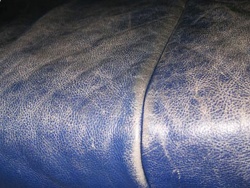
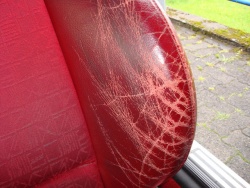
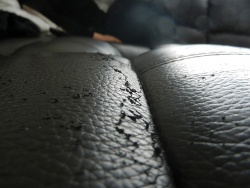
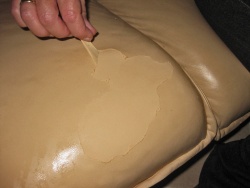
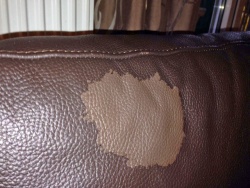
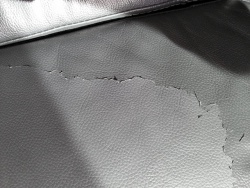
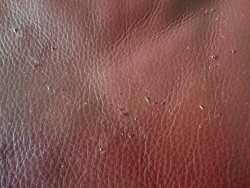
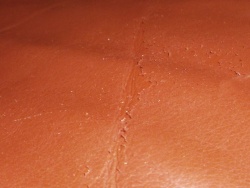
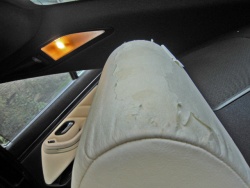
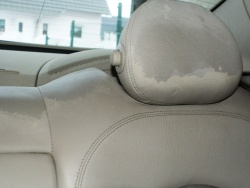
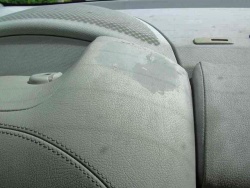
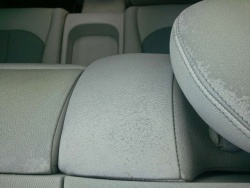
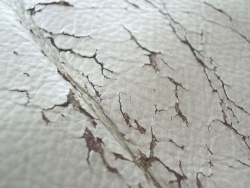
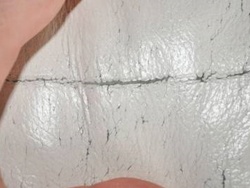
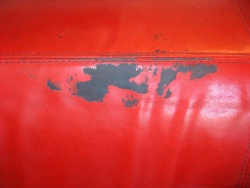
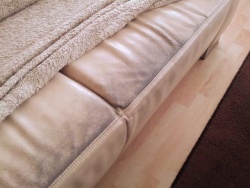
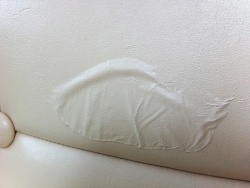
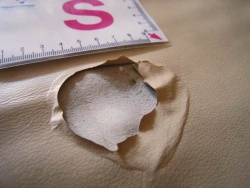

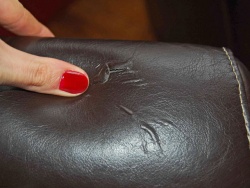
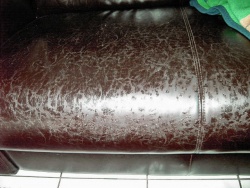
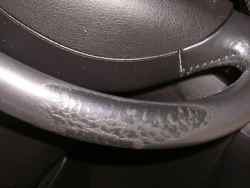
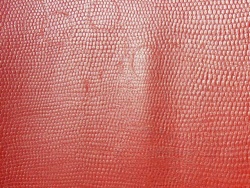
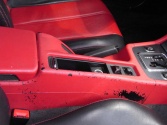
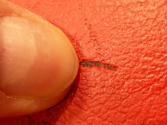
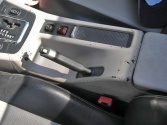
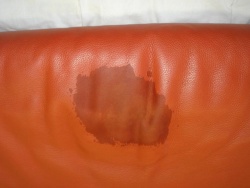
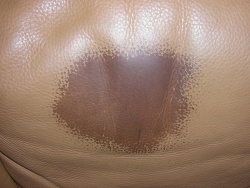
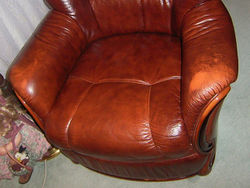
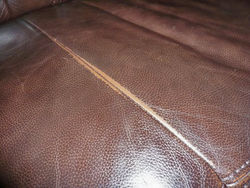
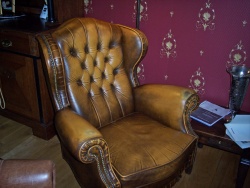
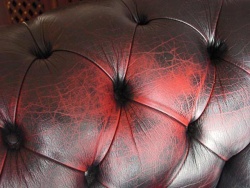
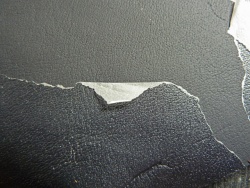
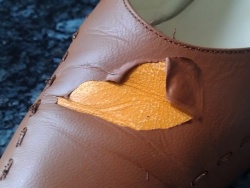
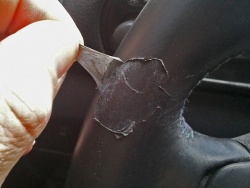
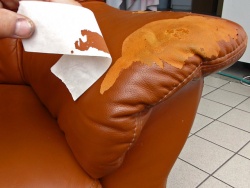

 a kotori web solution
a kotori web solution